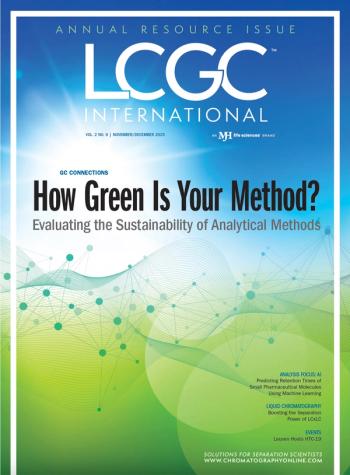Key Points
· A recent study compared multioil lipid emulsion (MO ILE) to traditional soybean oil lipid emulsion (SO ILE) in infants with gastrointestinal (GI) disorders, and found that while the overall incidence of parenteral nutrition–associated cholestasis (PNAC) was similar between the groups, infants on MO ILE who required parenteral nutrition for more than 28 days experienced a slower rise in serum conjugated bilirubin—a key marker of cholestasis—suggesting a potential hepatoprotective effect of MO ILE.
· Infants who received MO ILE showed less decline in weight z scores (indicating better growth) compared with those on SO ILE. Additionally, although MO ILE initially improved DHA status, both groups showed declines in DHA and arachidonic acid over time. No significant differences in the rate of change of these fatty acids were observed.
· The retrospective, single-center study had a small sample size and potential confounding factors, such as changes in clinical practice and differences in breast milk composition. Despite this, the authors recommend promoting enteral nutrition, reducing parenteral nutrition duration, and preventing infections as key strategies for managing PNAC and intestinal failure–associated liver disease in infants.
A joint study between the David Geffen School of Medicine at the University of California Los Angeles (Los Angeles, California) and the Department of Pediatrics at Boston Children's Hospital (Boston, Massachusetts) compared parenteral nutrition–associated cholestasis, growth, and fatty acids in infants with gastrointestinal (GI) disorders who received multioil intravenous lipid emulsion (MO ILE) or soybean oil lipid emulsion (SO ILE). The research was based on the hypothesis that infants receiving MO ILE would be less likely to develop cholestasis compared with infants receiving SO ILE. Gas chromatography-mass spectrometry (GC-MS) was used to measure fatty acid content in the erythrocyte cell membrane. A paper based on this research was published in the Journal of Parenteral and Enteral Nutrition (1).
Infants with GI disorders require parenteral nutrition for hydration and growth during periods of intestinal recovery. While some children have a transient dependence on parenteral nutrition, a subset will develop intestinal failure (IF), which defined as the inability of the gut to absorb nutrients, electrolytes, and fluid to sustain growth, resulting in parenteral nutrition dependence (>60 days in a 74-day period) (2). Infants requiring long-term parenteral nutrition are at risk for parenteral nutrition–associated cholestasis, which is defined as serum conjugated bilirubin of ≥2 mg/dl after 14 days of parenteral nutrition. Long-term parenteral nutrition can lead to IF-associated liver disease, defined by hepatic injury in the setting of IF (2,3), and can conclude in end-stage liver disease, leading to the need for multivisceral organ transplantation (4).
While 100% SO ILE has historically been the mainstay for infants with GI disorders (5), it provides a high concentration of phytosterols that activate hepatic macrophages, stimulate cytokine production, and reduce the expression of genes associated with bile, bilirubin, and sterol secretion (6). In an observational study (7), the team of researchers demonstrated that preterm infants who received MO ILE (a multoil combining four oils: 30% SO, 30% medium-chain triglycerides, 25% olive oil, and 15% fish oil [8]) are less likely to develop cholestasis and have lower maximum serum conjugated bilirubin concentrations compared with preterm infants who received SO ILE. However, when days to reach full feeds was accounted for, the incidence of cholestasis was no longer statistically significant. This led to the researcher’s hypothesis that their findings were because of the low incidence of intestinal injury and cholestasis, small sample size, and study design. These results led them to this study, where the median parenteral nutrition duration was 29 and 23 days for the SO ILE group and the MO ILE group, respectively (1).
This retrospective cohort study included 48 infants with GI disorders born between 2014 and 2022 who received an intravenous lipid emulsion for ≥14 days. Cholestasis was defined as serum conjugated bilirubin ≥2 mg/dl; growth was assessed by z score changes. As mentioned previously, GC-MS was used to measure fatty acid content in the erythrocyte cell membrane (1).
The researchers report that, while the incidence of parenteral nutrition–associated cholestasis was similar compared with infants who received parenteral nutrition >28 days and SO ILE, infants who received parenteral nutrition >28 days and MO ILE experienced a slower rise in conjugated bilirubin. Although the MO ILE group demonstrated improved DHA status at weeks 1–3, arachidonic acid and DHA decreased over time in both groups and there was no difference in the rate of change (1).
That data has led the researchers to conclude that, in infants with GI disorders, MO ILE was associated with improved growth and was well tolerated and hepatoprotective in infants who required prolonged parenteral nutrition. However, they admit that their study has limitations, the first being that theirs is a retrospective cohort, single-center study with a small sample size. Participants received SO ILE if born prior to 2017 and MO ILE thereafter; therefore, potential confounding variables, such as changes in medical practice, cannot be accounted for and may have influenced outcomes. Furthermore, some participants in the MO ILE group received SO ILE because of drug compatibility issues. Although this is a limitation, this may reflect actual clinical practice since clinicians now have access to multiple lipid emulsions. The red blood cell membrane fatty acid content was only available for a subset of infants. Blood samples were also not available immediately after birth.
The researchers were unable to account for the fatty acid content of enteral nutrition (1). Most infants in the study received maternal or donor breast milk, and the fatty acid composition of an individual's breast milk will vary (9). Despite these limitations and regardless of lipid type, the researchers are adamant that the promotion of enteral nutrition, decreasing parenteral nutrition days, and preventing infections remains the cornerstone for the management of parenteral nutrition–associated cholestasis and IF-associated liver disease (1).
References
1. Lee, L. J.; Kim, E. S.; Romero, T.; Calkins, K. L. Association Between Multioil Intravenous Lipid Emulsion and Cholestasis in Infants with Gastrointestinal Disorders: A Retrospective Cohort Study. JPEN J. Parenter. Enteral. Nutr. 2025. DOI: 10.1002/jpen.2776
2. Modi, B. P.; Galloway, D. P.; Gura, K. et al. ASPEN Definitions in Pediatric Intestinal Failure. JPEN J. Parenter. Enteral. Nutr. 2022, 46 (1), 42-59. DOI: 10.1002/jpen.2232
3. Carter, B. A.; Karpen, S. J. Intestinal Failure-Associated Liver Disease: Management and Treatment Strategies Past, Present, and Future. Semin. Liver Dis. 2007, 27 (3), 251-258. DOI: 10.1055/s-2007-985070
4. Fullerton, B. S.; Sparks, E. A.; Hall, A. M. et al. Enteral Autonomy, Cirrhosis, and Long Term Transplant-Free Survival in Pediatric Intestinal Failure Patients. J Pediatr. Surg. 2016, 51 (1), 96-100. DOI: 10.1016/j.jpedsurg.2015.10.027
5. Fresenius Kabi, Intralipid 20% Prescribing Information. Fresenius Kabi, 2015. http://products.fresenius-kabi.us/product-428.html (accessed 2025-06-05)
6. El Kasmi, K. C.; Anderson, A. L.; Devereaux, M. W. et al. Phytosterols Promote Liver Injury and Kupffer Cell Activation in Parenteral Nutrition-Associated Liver Disease. Sci. Transl. Med. 2013, 5 (206), 206ra137. DOI: 10.1126/scitranslmed.3006898
7. Kim, E. S.; Lee, L. J.; Romero, T. et al. Outcomes in Preterm Infants Who Received a Lipid Emulsion with Fish Oil: An Observational Study. JPEN J. Parenter. Enteral Nutr. 2023, 47 (3), 354-363. DOI: 10.1002/jpen.2464
8. Fresenius Kabi, SMOFlipid Prescribing Information. Fresenius Kabi, 2015.https://www.fresenius-kabi.com/content/dam/fresenius-kabi/ie/documents/pn-documents/smofkabiven-smofkabiven-peripheral/SMOFlipid%20Prescribing%20Information%20.pdf.coredownload.inline.pdf (accessed 2025-06-05)
9. Castillo-Ferrer, F. J.; Cordobilla, B.; Domingo, J. C. Inadequate Content of Docosahexaenoic Acid (DHA) of Donor Human Milk for Feeding Preterm Infants: A Comparison with Mother's Own Milk at Different Stages of Lactation. Nutrients 2021, 13 (4), 1300. DOI: 10.3390/nu13041300




